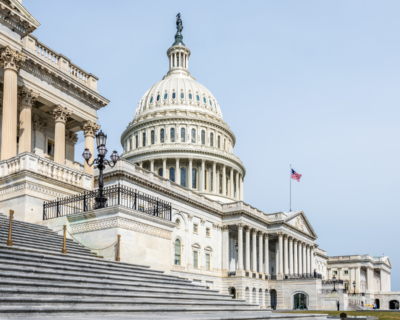
Louisiana Economic Situation—May 2023
Key Point: Louisianans aren’t reaching their full potential primarily because of bad public policies but that can change with the Pelican Institute’s “Comeback Agenda.”
Louisiana’s Labor Market: Table 1 shows Louisiana’s labor market over time until the latest data for April 2023 from the U.S. Bureau of Labor Statistics.
Table 1: Labor Market Indicators in Louisiana
| June 2009 | February 2020 | April 2020 | April 2023 | |
| Labor force participation rate | 61.2% | 58.3% | 55.5% | 59.5% |
| Employment-population ratio | 56.9% | 55.5% | 48.0% | 57.4% |
| Unemployment rate (U3) | 7.0% | 5.2% | 13.5% | 3.6% |
| Total nonfarm employment | 1.90M | 1.99M | 1.71M | 1.96M |
| Private sector employment | 1.53M | 1.66M | 1.39M | 1.64M |
Data compare the following: 1) June 2009—Dated trough of that U.S. recession, 2) February 2020—Dated peak of the last U.S. expansion, 3) April 2020—Dated trough of the last U.S. recession, and 4) April 2023—Latest data available.
The establishment survey shows that net total nonfarm jobs in the state increased by 8,200 jobs last month (+0.4%), bringing total jobs to 33,700 jobs below the pre-shutdown level in February 2020. Private sector employment was up by 5,900 jobs (+0.4%) and government employment increased by 2,300 jobs (+0.7%) last month. Compared with a year ago, total employment was up by 48,400 jobs (+2.5%), with the private sector adding 41,400 jobs (+2.6%) and the government adding 7,000 jobs (+2.3%).
The household survey finds that the working-age population declined by another 920 people last month, down 11,077 people over the last year, and down 33,212 people since February 2020. But the civilian labor force rose by 6,260 people last month, 16,090 people over last year, and 24,592 people since February 2020. These figures result in a labor force participation rate of 59.5%, which is up from 58.9% from last year and up from 58.3% since pre-shutdown but well below the 61.2% rate in June 2009. While the unemployment rate of 3.6% is substantially lower than the 5.2% rate in February 2020, a broader look at Louisiana’s labor market shows that Louisianans still face challenges (see Figure 1). These challenges include the continued decline in the working-age population which weighs on the labor-market shortage and long-term economic growth and comparisons with neighboring states based on several measures indicate concerns.
Figure 1: Employment Growth Comparison Among States Over Last Year

Source: U.S. Bureau of Labor Statistics
Economic Growth: The U.S. Bureau of Economic Analysis (BEA) recently provided the real (inflation-adjusted) gross domestic product (GDP) and personal income for Louisiana and other states in Figure 2.
Figure 2: Real GDP Growth by State in 2022

Source: U.S. Bureau of Economic Analysis
Table 2 shows how U.S. and Louisiana economies performed since 2020. The steep declines were during the shutdowns in 2020 in response to the COVID-19 pandemic, which was when the labor market suffered most. The increase in real GDP of +2.2% in Q4:2022 ranked 26th in the country, resulting in an annual decline in economic output by -1.8% in 2022 which was the second worst in the country.
Table 2: Economic Growth Comparison Between U.S. and Louisiana
| 2020 | 2021 | 2022 | Q1:2022 | Q2:2022 | Q3:2022 | Q4:2022 | |
| U.S. real GDP annual growth rate | -2.8% | +5.9% | +2.1% | -1.6% | -0.6% | +3.2% | +2.6% |
| U.S. real private GDP growth | -3.9% | +7.2% | +2.6% | -1.5% | -0.5% | +3.1% | +2.3% |
| Louisiana real GDP growth | -7.9% | +1.3% | -1.8% | -8.9% | -3.0% | +2.5% | +2.2% |
| Louisiana private real GDP growth | -8.9% | +1.5% | -1.6% | -7.9% | -3.2% | +2.8% | +2.2% |
The BEA also reported that personal income in Louisiana grew at an annualized pace of +6.0% (ranked 32nd) in Q4:2022 (below +7.4% U.S. average). This resulted in personal income growth of 0.0% in 2022, ranking 50th of the states, driven by the negative $10 billion (-4.0-percentage points) in transfer payments from a decline in safety net payments as the expanded child tax credit expired and more people found jobs, but increases in net earnings by $8.4 billion (+3.4-percentage points) and other income by $1.6 billion (+0.6-percentage point). Personal income per person in Louisiana increased by 0.08% to $54,622 last year, which ranked 42nd in the country but the increase was well below inflation.
Bottom Line: More Louisianans gained jobs in April, but their pay hasn’t been keeping up with inflation in a stagnant economy. Economic freedom matters to human flourishing, but Louisiana ranks relatively low among the states in economic freedom and other measures. While the state improved its tax code in 2021, there’s a historic opportunity to ensure prosperity by doing more this session. The combination of spending restraint, not busting the spending caps, paying down debt, and putting money in the rainy day fund for tax relief now are essential. These steps would improve the state’s poor business tax climate, help curb the net outmigration of Louisianans, and help mitigate the 19.6% poverty rate that ranks second highest in the country. State and local policymakers should work to reverse this trend by passing pro-growth policies.
Which pro-growth policies should be pursued? Refer to the Pelican Institute’s “Comeback Agenda” for policy recommendations related to the state’s budget and taxes, K-12 education, public safety, social safety nets and workforce development, technology and innovation, and reducing regulatory barriers.




